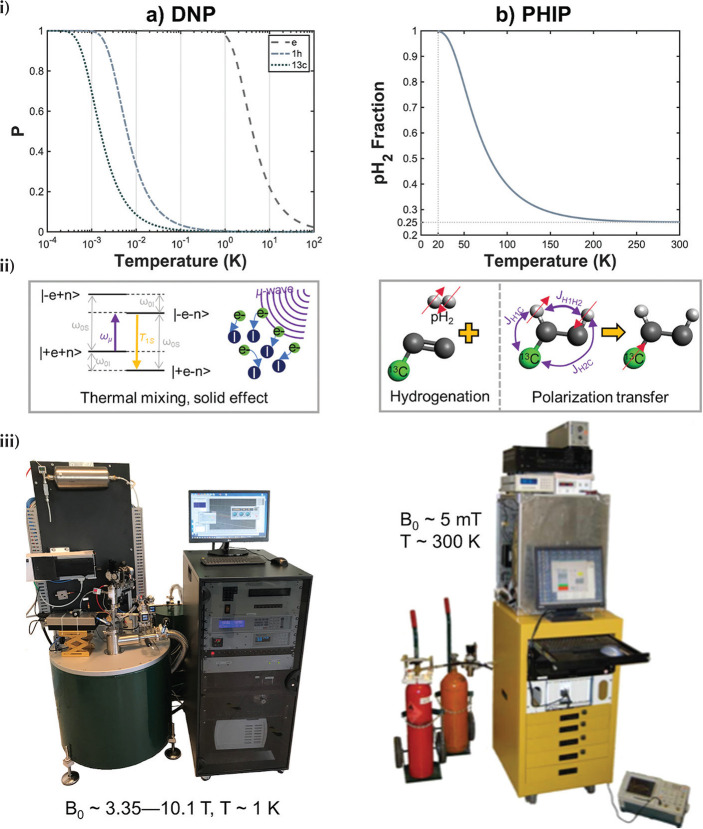Fig. 2.
Concept diagram for dissolution dynamic nuclear polarization (d-DNP) and parahydrogen-induced polarization (PHIP) polarization techniques. (a) In d-DNP, the source of 13C nuclear polarization (P) is the approximately unity electron polarization (P) at low temperature and high magnetic field (curves plotted for 3.35T) (i). This is transferred to 13C via microwave excitation (ii), predominantly mediated via the thermal mixing effect. (iii) Prototype commercial cryogen-free d-DNP system reported in Ardenkjaer-Larsen et al.40 (original photo courtesy of Jan Henrik Ardenkjaer-Larsen, Technical University of Denmark and GE Healthcare). (b) In PHIP, the source of 13C polarization is the inherent spin order of the parahydrogen spin isomer of hydrogen, which can be generated to very high purity by cooling normal hydrogen in the presence of a paramagnetic catalyst (i). Parahydrogen is reacted with an unsaturated substrate, generating 1H hyperpolarization, which is subsequently transferred to 13C or other target heteronucleus (ii). Several dedicated low-field (mT) polarization systems have been designed for automating the hydrogenation and polarization transfer processes; the example shown is reprinted with permission from Springer Nature (Hövener et al).58

